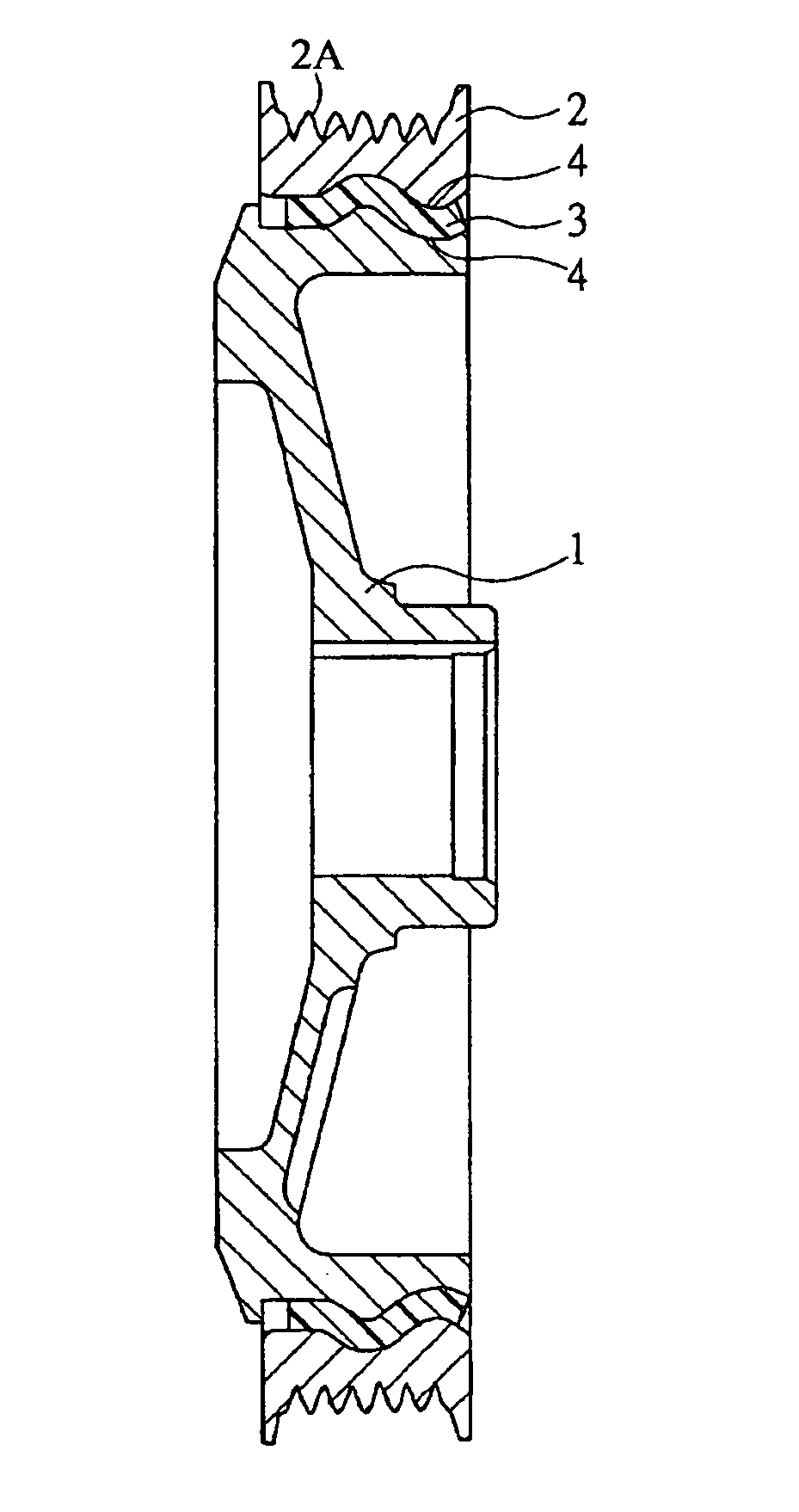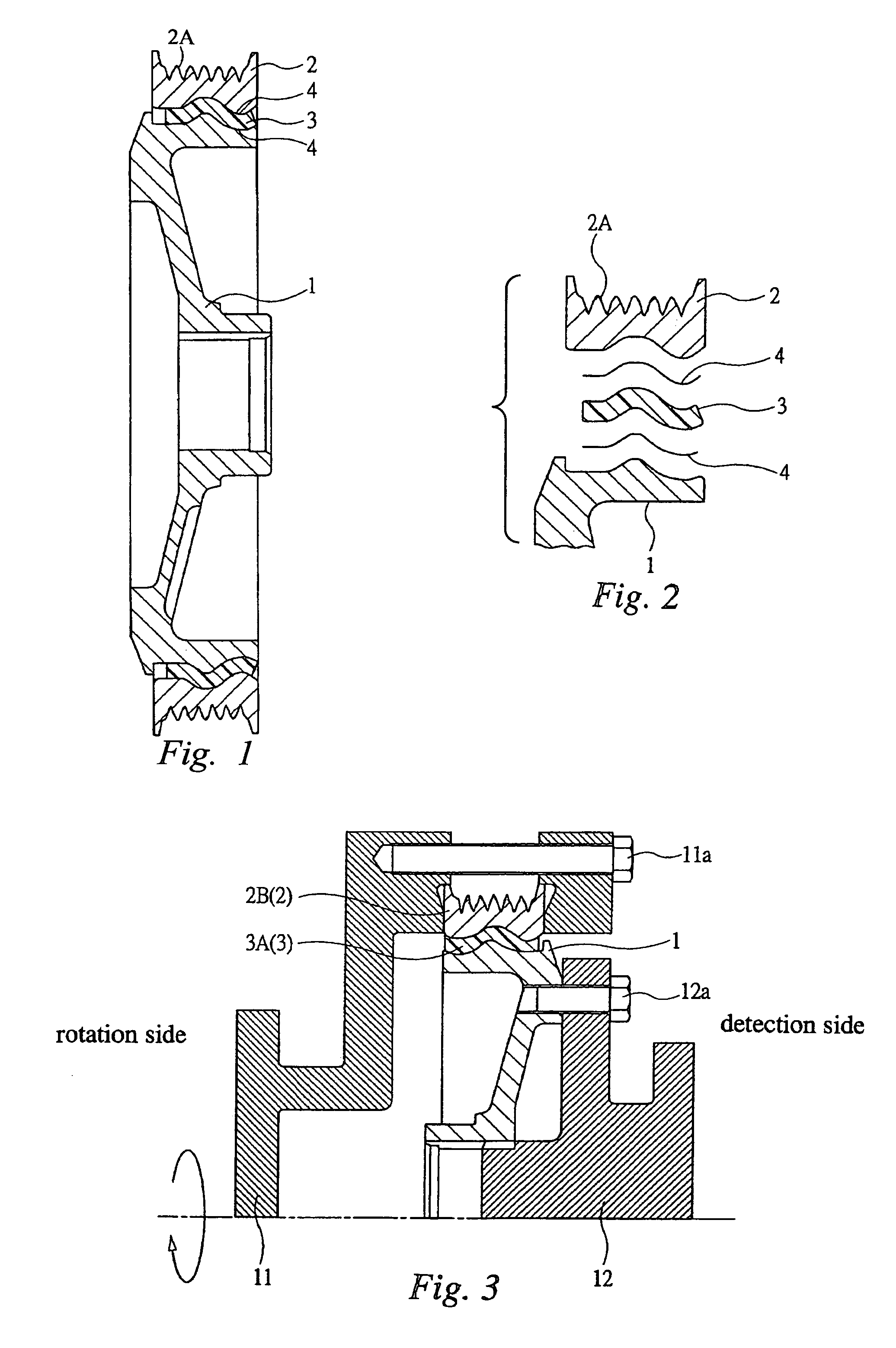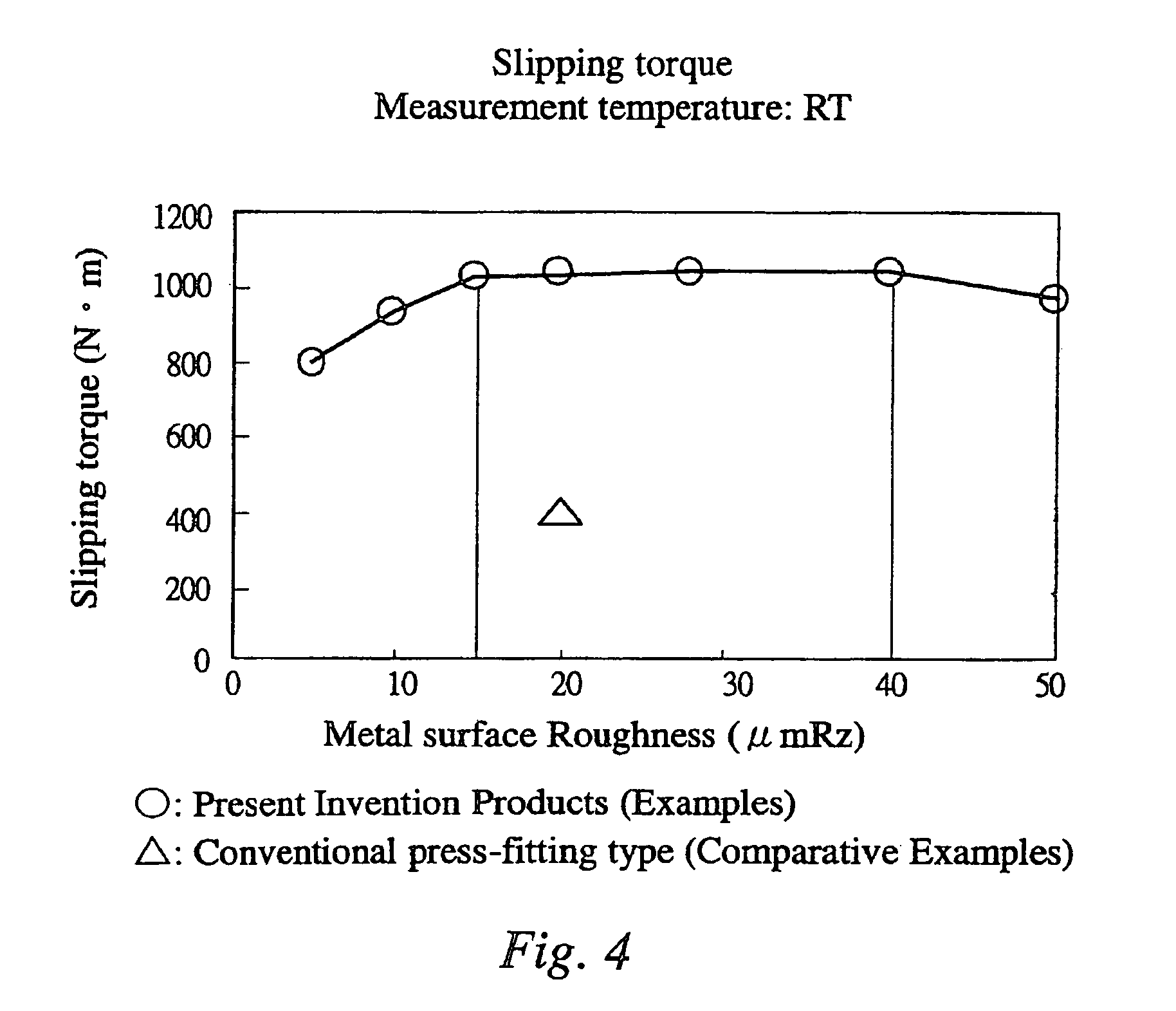Damper and process thereof
a technology of adamant and a process, applied in the field of adamant, can solve the problems of difficult to cause stable chemical surface treatment, large amount of unevenness in the metal surface subjected to no chemical surface treatment, and insufficient adhesive power
- Summary
- Abstract
- Description
- Claims
- Application Information
AI Technical Summary
Benefits of technology
Problems solved by technology
Method used
Image
Examples
Embodiment Construction
[0031]FIG. 1 is a cross section showing an embodiment of a fitting type damper according to the present invention.
[0032]FIG. 2 is a partially cross section of the damper shown in FIG. 1. In these drawings, reference number 1 denotes a hub. This hub 1 is made of a given metal and has a ring form. The hub 1 is attached to an outer periphery of an end of a crankshaft (not shown) in an internal combustion engine such as an automobile engine or the like. A metal surface of the outer periphery of the hub 1 is subjected to no chemical surface treatment such as plating treatment.
[0033]Reference number 2 denotes a inertia mass body, and this inertia mass body 2 is made of a given metal and has a ring form. The inertia mass body 2 is arranged at an outer peripheral side of the hub 1 and concentrically with the hub 1 and is spaced from the hub 1. A metal surface of an inner periphery of the inertia mass body 2 is not subjected to chemical surface treatment such as plating treatment or the like...
PUM
| Property | Measurement | Unit |
|---|---|---|
| outer diameter | aaaaa | aaaaa |
| temperature | aaaaa | aaaaa |
| height | aaaaa | aaaaa |
Abstract
Description
Claims
Application Information
 Login to View More
Login to View More - R&D
- Intellectual Property
- Life Sciences
- Materials
- Tech Scout
- Unparalleled Data Quality
- Higher Quality Content
- 60% Fewer Hallucinations
Browse by: Latest US Patents, China's latest patents, Technical Efficacy Thesaurus, Application Domain, Technology Topic, Popular Technical Reports.
© 2025 PatSnap. All rights reserved.Legal|Privacy policy|Modern Slavery Act Transparency Statement|Sitemap|About US| Contact US: help@patsnap.com



